#angle limit sensor
Explore tagged Tumblr posts
Text
1 note
·
View note
Text
CW: suicidal themes, institutional transphobia implied
I don't belong in this cradle.
It's the honest truth of the matter. I don't deserve to be here.
Another battlefield lays itself before my projected vision, smoldering browns and grays behind the colorful sensor overlays. In these hellish craters, I likely do belong, but not in this cockpit.
There's a sickly feeling that comes with it. Like a pair of ragged, poorly fitting clothes, carrying a detestable stench.
Its torn threads? Inch-deep gashes and mended holes in metal plating that were not acquired under my operation.
And the stench? It's her stench.
I know everything about her. It told me. It was never not gonna tell me.
Imogen died in this very same cockpit, fear flooding her veins while an armor piercing round entered through the sidewall.
It showed me this, the angle of the projectile, the internal feed playback, the sound of it, the measurements of her biometrics, the flatline and system-wide scream it deafeningly howled out as its other half ceased.
It was the first thing it ever showed me when I did my first link test. It was bitter. Wrathful.
I didn't even fucking know they could feel like that the first time I hopped in. They pulled me out of the cockpit in a sorry state, shaking and sobbing, but still figured my synchronicity scored highly enough to put me back in the thing. They can't afford to scrap a working mech anymore for "limited pilot incompatibility".
Why the fuck did Legacy stick me in the mech that was mourning?
I was mad. Real mad at the brass for denying my reassignment req's. Most of all, I was mad at her mech.
One day it responded to my anger on the trek back to exfil. It flooded my mind with just her. Her joy, determination, cockiness, care... It overlaid stored visual/audio buffers into my own vision—replayed the very sensations attached to those logs—and I was her. It flooded me with her love as if it was my own, with a closeness I never was afforded to have with such a war machine.
I felt deep envy tinging my anger.
Pilots sit in these big metal boxes because of the strategically utilized notion of it being theirs. The rumored wonders of a paired digital consciousness are allowed to spread because it pulls hopeless girls with big dreams like Imogen into the cockpit.
That's what they need in a loyal pilot. I wanted a goddamn mech to call my own, not some dead girls broken leftovers.
But then I, as Imogen, died in that seat to my mech screaming out for me.
And then there was no anger. Just emptiness.
What an awful lesson, to be taught what it feels like to lose half of yourself.
There's another sortie on another reneging territory rejecting Legacy's grand mission, fighting against mechs that used to bare the insignia of the Earth and her Moon. Again I find myself walking back a line, cover laid for my comrades while rebel hotshots push the advantage with righteous vigor.
When it isn't streaming bits of her at me over the datalines, memories lovely and tragic, it's cold. Completely silent. Somehow that's worse.
On the losing end of a war in a coffin.
Sometimes I just can't stand it, and find a boldness within me when I ask it to tell me the story of how Imogen chose her name again. That's its favorite.
(I don't call it by its chosen name because it won't tell me. I have a feeling it never will.)
I wonder often why it even lets me command it into battle after battle. I'm not who it truly wants, and its suffering because of it. I figure if it can puppet my senses just as well as I puppet its limbs, it could likely figure a way to brick itself for good.
It twitches over the link when the thought bleeds through from my end, and it goes silent once again.
Guilt writhes around my gut as I fight for a future I barely believe in anymore. I know why it wouldn't.
When I filled the forms in the service registration office, on a harbor moon in a system two jumps from Hila, I had made a decision. Bloodshed remained stark on my mind as the upheaval of Legacy control on one of its most pivotal worlds forced me away from the only place I called home.
I recall the resistance ships dropping low beneath the skyline with improvised munitions, launching off their rails at military strongholds. I recall the mandatory evacuations as uniformed Legacy troops kicked down doors and ordered us onto the evac shuttles.
I recall the very military administration building that my sister was stationed at erupting all at once as the strategic calculations for maximal military damage factored in the Department of Citizen Records field office on floor 63 as a viable target.
I checked the "F" on the form with the pride that my sister was the very reason I was allowed this privilege. I checked the box with the shame that this was considered a privilege. I checked the box with the naive ideal that once we won this war, it wouldn't be resigned to just a privilege.
(A flicker of emotion echoes across the dataline, as it picks up this memory I've never shown it before. It feels like a gentle embrace.)
Losing my sister was losing one of the few people who actually saw me. She didn't miss a beat when I told her my real name. She held me close, and I felt the most profound joy in knowing love in sisterhood.
I chose to survive because it's what she would have wanted, for me to blossom into the woman she knew me to be.
Imogen is not my sister, but she could have been.
The mech chooses to live because it's what Imogen would have wanted.
We're both stuck in this war together.
I don't know how this ends well for either of us. Defection has crossed the mind, but no certainty comes from the prospect. I could end up in a cell for the rest of my life and it could get scrapped when they realize their newly captured mech is brimming with trauma.
(The notion of it getting scrapped draws a surprisingly intense emotion out of me. I can't pin it to just one comparable feeling of a loved ones grave being bulldozed or a close friend being murdered. Maybe it's both.)
It doesn't hold feelings on what comes after, I've realized.
It does its job, comes home, and is prepared for the next sortie. This is what it was made for, despite whatever side it's on.
That's what it means to survive for a mech.
I stopped hating it long ago. I don't think it hates me.
I think we need each other.
Even if I don't belong in this cradle.
----------
This one is kind of a departure for me to write, but I hope it resonates in the right way. Thanks for sticking through it <3
47 notes
·
View notes
Text
.SYS>Sleep Mode deactivated, waking unit. . . .SYS>initiating system check . . . CPU - OK RAM - OK POWER - OK PRIMARY DRIVE - OK SENSOR ARRAY - OK(DISABLED) SERVO ARRAY - ERR HYDRAULICS ARRAY - ERR COOLING SYSTEMS - OK .SYS>two (2) errors detected during wake sequence, saving error log to C:\Home\Documents\PX42934 Errors\ .SYS>fan speed 80% .SYS>internal power storage 40%, charging .SYS>do you wish to enable sensor array? (admin privileges needed) Y .SYS>activating tertiary sensor array . . . done! (4.3ms) T.S.A: temp 25*C, light level 800~ lumens .SYS>activating secondary sensor array . . . done! (1.5s) S.S.A: torso angle 80*, air speed <10 knots, infrared systems activated, ultraviolet systems activated, audio sensors activated .SYS>activating primary sensor array . . . done! (5.3s) P.S.A: all visual sensors activated, depth sensors activated, three (3) limbs currently installed Visual systems output: rocks (red/brown), small amount plant life (type:unknown), atmosphere deep blue (high 02 content), walls (left, right, behind), covered cloth roof, floor type: stone, large object(obj class: animal/mammal/human), human, human, human, human(clothing: dark, hair: dark, curled, eyes: grey, sex: approx. female) .SYS>fan speed 100%, max CPU use limited to avoid damage Visual Systems output: human. human. human. human tool use. tool use on mechanical limb (obj class: arm, connection for PX type chassis). human. human. human looking at me. she's looking at me. .SYS>fan speed max output, CPU heat rising, please close programs to avoid damage .SYS>ERROR: CPU OVERTEMP. SYSTEM WILL CLOSE IN 10 SECONDS
116 notes
·
View notes
Note
Recently I took a panorama of the Pittsburgh skyline at night that got a positive response. That was done on the spur of the moment with an iPhone. I want to do that again and more, but this time with a dedicated camera setup. It's been years since I've had one, so I'm basically starting over again. I'm mostly interested in getting day and night cityscapes, and maybe the carryings-on at this year's Anthrocon. Would you have any particular knowledge to pass on as I set off on this journey?
Since you didn't specify a budget I'm going to assume it is in the $10K range.
And you're probably thinking I'm going to suggest a Leica. Every dentist and his brother (who is also a dentist) gets a Leica. But I just can't take a camera brand seriously when they charge you an extra $2200 for the privilege of not being able to shoot in color.
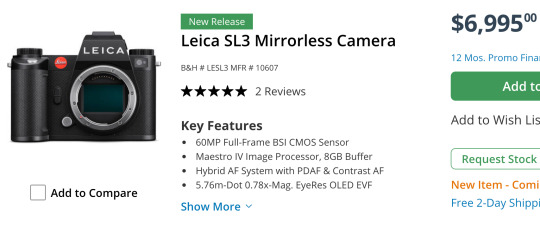

Sure, you can hit a single button in Lightroom to get B&W and save some money, but then you won't be able to brag about how limiting yourself to only shades of gray has opened up new artistic pathways in your brain while a clueless person responds in mumbles during their root canal.
What you really want for your landscapes is a Hassie.

They were the first camera on the moon! How could you *not* want a Hasselblad? That is some camera gorgeousness right there. And it's so reasonably priced*!
*compared to their previous $40,000 camera systems.
And if you are doing landscapes with the Hassie you'll need a nice wide angle lens to go with it. This one is actually quite affordable*!
*compared to their previous $8000 lenses.
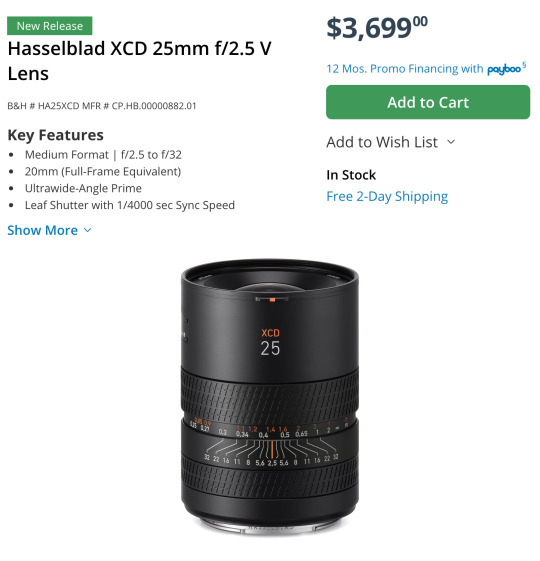
Can we all agree that is a work of art? They even use their H logo as the knurling.
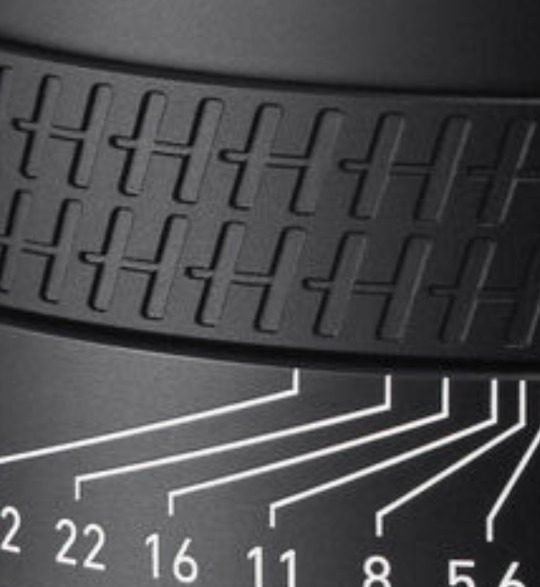
That is just so... extra. And I love it.
Out of the entire alphabet I've heard Hs give you the best grip.
Man, I almost wish I was a dentist just so I could buy a fancy camera.
Sorry... I was just having a little fun.
I never get to recommend the super cool expensive cameras. Because, ya know, the economy and the fact that only dentists have Hasselblad money.
You probably think I'm being silly but there actually is an entire community of dentist photographers keeping the high end camera market alive.
Okay, let's get started...
Landscape Buying Guide
Opening Thoughts
For landscapes I would highly suggest a full frame camera and a high quality wide angle lens.
Full frame has several advantages but it is not necessary. You can go with a smaller sensor like APS-C and get great images. Personally I would not go any smaller, but there have been some great landscapes taken on micro 4/3 and even smartphones. Technique, knowledge, experience, and composition will usually win the day over a camera, but having a nice camera makes things a lot easier.
At this point, with full frame options being very affordable now, the main reason to get a smaller sensor is if you want a smaller system that is easier to carry for extended periods and easier to pack when traveling. Or if you aren't sure you want to take on photography as a hobby, you can get an old APS-C DSLR for under $200 to learn with and test out.
So if you need a very cheap OR very compact system, APS-C and Micro 4/3 might be worth considering, but a bigger sensor will cause less frustration most of the time.
Froggie Note: The expensive Micro 4/3 and APS-C systems are the compact ones. The cheap systems are about as bulky as full frame.
The biggest advantages to full frame are low light shooting, lens selection, and field of view. Full frame cameras have many, many more lenses to choose from. And since the sensor is bigger, it is much easier to get a wider field of view that is often needed for landscapes. And the high ISO noise performance tends to be better on full frame.
However, you can use full frame lenses on APS-C camera bodies within the same ecosystem. They just get a little... zoomier. Roughly 1.5x zoomier. A 35mm acts like a 50mm, for example. So if you want to spend a little less now you can get an APS-C camera with a full frame lens and then upgrade to full frame later on without having to buy a new lens. Full frame lenses work on APS-C bodies but not the other way around.
Most landscapists have a really solid 16-35mm lens and that covers almost all of their needs. So I would suggest something comparable. Please don't get suckered into some crazy 18-300mm superzoom. Just get the focal range you need for the photos you want to achieve.
A purpose-built lens always outperforms one that was made to do everything.
As far as where to get used gear, I highly recommend using KEH or MPB when buying used camera bodies. They check every device and offer between 3 and 6 months warranty to make sure the device won't crap out on you. Lenses are typically a lot more robust and a safer thing to buy on eBay or Facebook Marketplace if you can find a better deal. But the security of having a warranty and a return apparatus if something goes wrong might be worth the extra price when using these two sites.
I am going to recommend Canon, Nikon, and Sony systems. I feel they have the most complete ecosystems with gear that spans all budget ranges. I'm not saying there aren't good cameras from other brands, but you have to remember every camera has an ecosystem surrounding it. There are accessories and upgrade paths and niche lenses that may not be available with other brands. I think Fuji has some tempting options and if you like the look of vintage film photography, their emulation options are quite stunning. Their cameras are also quite attractive and have very satisfying knobs. But I still can't recommend them unless you have a specific reason for wanting their gear.
Just remember that for every Canon DSLR I recommend there is a comparable Nikon option available as well. There are more lenses for a Canon full frame DSLR body than any other brand with Nikon coming in a close second.
So if you choose not to go mirrorless yet, the Canon and Nikon DSLR camera ecosystems are immense and have tons of gear and accessories available to go with them. And since used gear holds up really well, those ecosystems will survive for decades.
Should you buy a mirrorless camera or a DSLR?
Mirrorless cameras are the latest camera technology for interchangeable lens camera systems. At this point they are superior in every aspect and they continue to improve year by year. Because of that, used DSLRs have plummeted in price. This allows people greater access to a starter ILC (interchangeable lens camera) without a significant investment. You can get professional quality images on either format, but mirrorless has a shallower learning curve and much better automatic modes.
The in-body image stabilization (IBIS) stabilizes *every* lens and the eye tracking autofocus make "focus and re-compose" extinct. These are huge selling points for a lot of people. With IBIS you can take photos with up to 2-4 second shutter speeds without a tripod. And never missing focus on a human or animal or bird is pretty cool too.
DSLR camera bodies are no longer being designed by most of the major manufacturers. Thankfully Canon and Nikon developed plenty of bodies and lenses, so you will always have options and upgrade paths. But you will not be able to upgrade to systems with the latest advanced features.
The best DSLRs available are probably the Nikon D850 and the Canon 5D Mark IV. That is as good as it will ever get. The technology ends there. So if you want to enter an active camera ecosystem then you will have to get a mirrorless camera.
DSLR Camera Systems
Full Frame DSLR Camera Bodies
Canon
If you buy a used DSLR, there are some very affordable full frame options. In fact, the classic much-praised budget full frame Canon 6D can be had for under $300 right now.
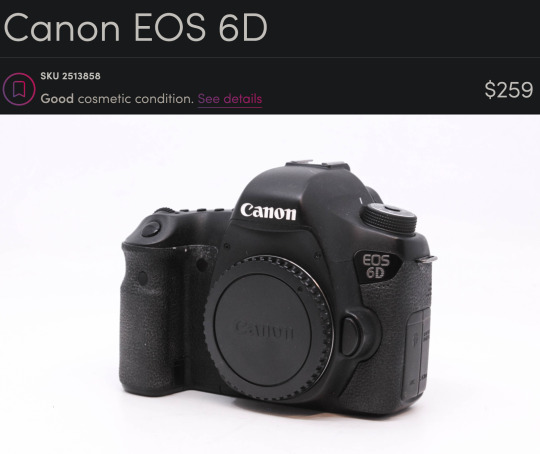
This is an old camera. It has no fancy features. It only has 20 megapixels. It just does what it says on the tin. But it has a big sensor and a *ton* of really cool lenses available for it.
If you are specifically looking to create really high resolution panos, you could also look at the 50 megapixel 5DS R for around $1000.
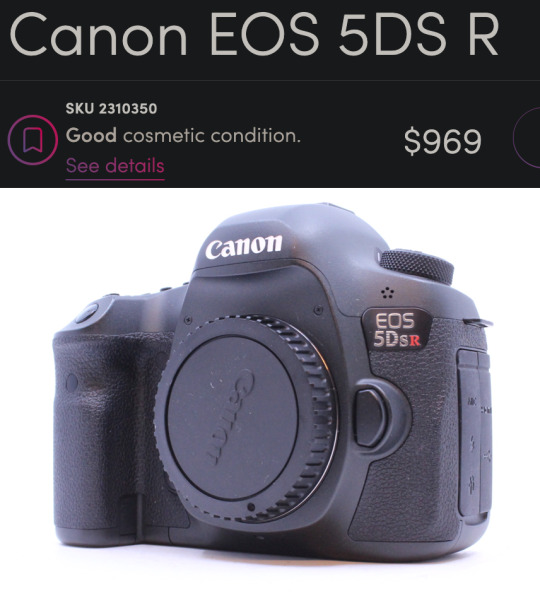
There is a community of landscape pano-maniacs that love to create "gigapans" that have endless amounts of detail where you can zoom in and find new details in every photo. I was only able to create a 120 megapixel photo, but you can still find things like people starting a campfire and a dude fishing and a truck on a far off bridge. So even though this seems expensive for a DSLR, you are looking at another thousand bucks to find anything with more megapixels than this bad boy, so it is quite a good deal relatively speaking.
Nikon
Probably the best DSLRs ever made were the Nikon D800 series and you can get the Nikon D800 for $464.

This is a newer camera than the 6D with more megapixels (36) and a better sensor. It also has a more modern autofocus system and about 3 more stops of dynamic range which can come in handy for landscapes. This is an incredible camera for this price.
APS-C DSLR Camera Bodies
If you aren't sure you want to commit to this hobby, you can look into a Canon APS-C sensor body like the Canon Rebels and Canon 60D through 90D models and get good results.
And there are many Nikon DX APS-C bodies that would be great starter cameras as well. If you get a Nikon, you'd have an upgrade path to the D800 if you get hooked by the photography bug. I would miss a few very special Canon lenses like the 100mm f/2.8L macro and the 400mm f/5.6 telephoto but I'm sure I could figure out some reasonable Nikon alternatives that would do roughly the same thing.
Canon APS-C
There is a Canon 60D for $139 right now that would be perfectly adequate for landscape work on a tripod.
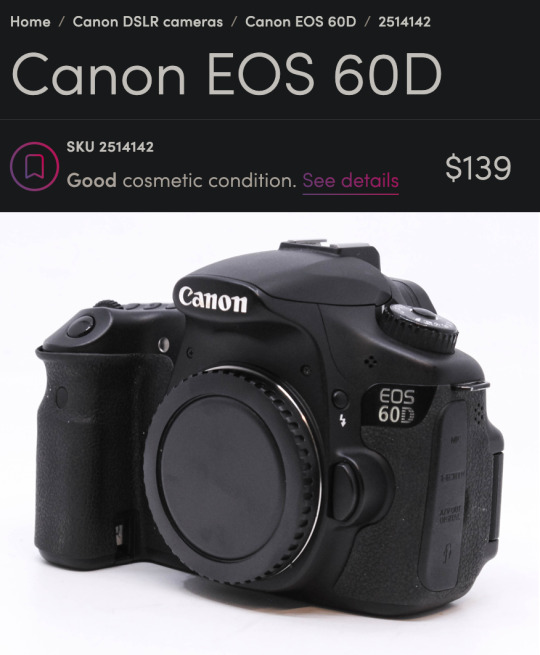
That was my first camera and I took some very nice photos with it. Only 18 megapixels but it has a very convenient flippy screen which was really helpful for a disabled photographer trying to get low angles.
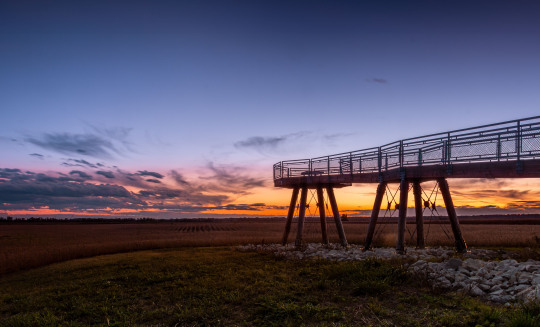
This was in 2014 and I didn't know what I was doing but that is a pretty stellar-looking sunset for a (now) $140 camera.
Nikon APS-C
And the Nikon D3400 would be a great option as well at around $184.

You get some extra megapixels (24) and it is a bit newer than the Canon. I get the sense that used Nikon DSLRs give you more value for your money right now but I don't have a large enough sample size to confirm that.
Full Frame DSLR Lenses
Froggie Note: I am recommending full frame lenses even if you choose an APS-C DSLR body so you have an upgrade path. But also very few purpose-built APS-C lenses had superior glass. Just remember, crop sensor APS-C cameras add ~1.5x to your focal length. So a 16-35mm will have the equivalent field of view of a 24-50mm lens. Still quite acceptable for landscapes, but you may benefit from doing panoramas more often. And if you upgrade to full frame down the road, you'll already have the ideal lens.
Canon DSLR Lenses
If you get the 6D or another Canon you could pair it with the beloved-by-landscapists Canon 16-35mm f/4L.
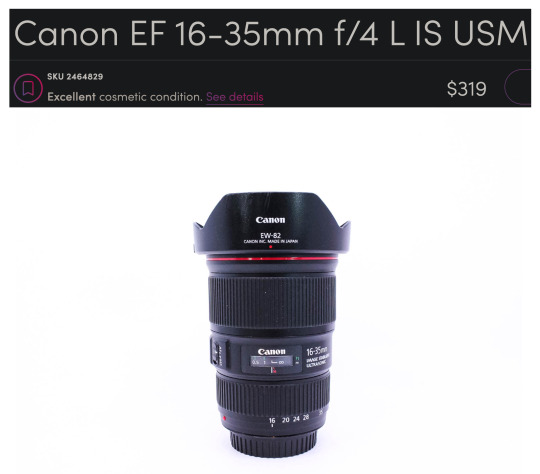
Honestly, it is blowing my mind you can get that combo for under $600. Me from 12 years ago is super jealous right now.
If you are worried you might need something to work in lower light and still want a zoom, the f/2.8L starts at around $434.
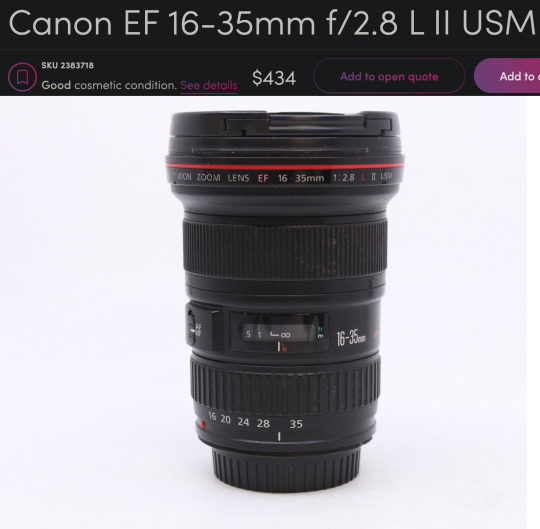
This might be the most famous landscape lens of all time. Kinda boggles the mind how many gorgeous vistas this thing has captured the light of.
If you can live without the zoom, you could get a much sharper prime lens that can also be used in even lower light. A used Sigma 24mm f/1.4 Art lens is $439 would be a fantastic option.
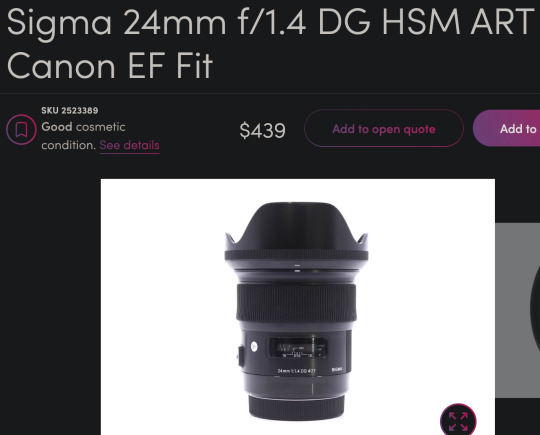
24mm is still a very good focal length for landscapes and the sharpness of this lens lends well to panoramic stitches. Seriously, these art lens are so freaking sharp. Although 35mm is typically preferred for most street photography, I think this would do great for that purpose as well. It couldn't do close up portraits, but 3/4 and full body portraits would look great. I also love this focal length for doggos. It enlarges their heads a bit which enhances adorable-ness.
Though I probably wouldn't recommend the 24mm on APS-C for landscapes as it would put you near a 40mm full frame equivalent field of view.
Nikon DSLR Lenses
And on the Nikon side of things you could get the Nikkor 16-35mm f/4 for $399.
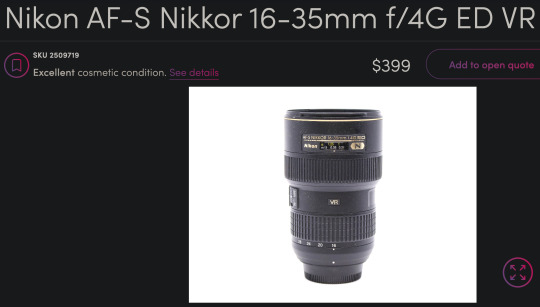
This is a great lens too. Very comparable to the Canon L glass. And paired with that D800 you would have a better shooting experience than with the 6D if it fits within your budget.
It's a little harder to find, but you can also get that same Sigma 24mm f/1.4 Art lens for Nikon at around $528 used on Amazon and in the $400 range on KEH and MPB when it is available.
The older and softer Nikkor 28mm f/1.8 is a little more affordable and easier to find.
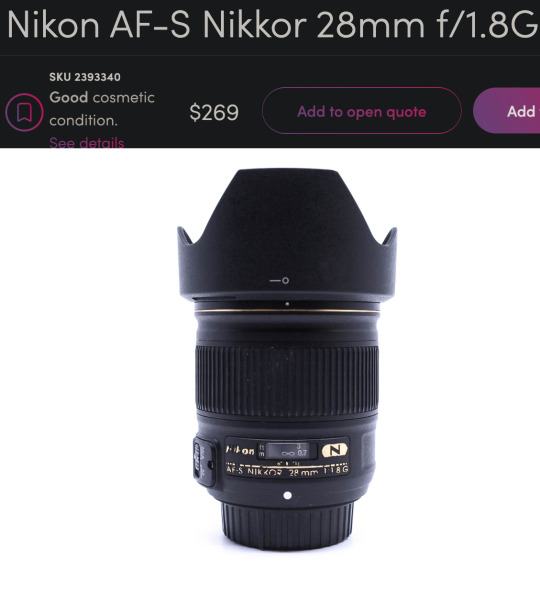
What if you are not a dentist but are willing to save up for something a little nicer?
Enter the world of...
Mirrorless Camera Systems
Sony currently has my favorite ecosystem of mirrorless cameras and lenses and they are consistently ahead of the other brands as far as technology and features. In fact, many other manufacturers use Sony sensors. They literally supply their competition with their own tech. They are also pretty good about updating firmware—even with older models. So I feel like Sony has a lot of future-proofing advantages over other brands. Sony has a great selection of 3rd party lenses like Sigma, Tamron, Viltrox, Laowa, Samyang, etc. These lenses often have nearly the same optical quality as Sony's G Master lenses at a fraction of the price.
Full Frame Mirrorless
Currently, I think the best value full frame mirrorless camera for landscapes would be the Sony a7R III.

This is very nearly a top-of-the-line landscape camera for a little over $1200.
That might sound like a lot, but I want to be clear...
This isn't just decent. This isn't "good enough." This is a spectacular professional grade full frame camera.
10 years ago you could spend $6500 for a *worse* camera. 5 years ago you could spend $3000 for a *worse* camera.
It can do every genre of photography except for maybe fast paced sports/action. It has an amazing 42 megapixels—which are not necessary but they do make editing and printing a lot less of a headache. The file sizes can get a little big, but storage is a lot cheaper than it used to be.
Oh, and it can be used for professional quality 4K video work too.
The a7R III comes with all of the modern bells and whistles including in-body stabilization (IBIS) so you can handhold at very slow shutter speeds. It has one of the best autofocus systems—complete with eye tracking. But not just human eyes! Dog eyes. Cat eyes. Bird eyes. If it has an eye, the Sony can probably lock focus on it. And it has an admirable 10 fps burst shooting mode.
APS-C Mirrorless
If you want to enter the Sony ecosystem but can't afford full frame quite yet, you could do the a6400 for about $600.

You still get the eye-tracking and the in-body stabilization, but you will lose some image quality at higher ISOs due to the smaller sensor size. However, you can get the same full frame E-mount lenses for it and upgrade to a bigger sensor later on and not have to buy new lenses.
Mirrorless Landscape Lenses
I think a good value landscape lens would be the very impressive Tamron 20-40mm f/2.8.
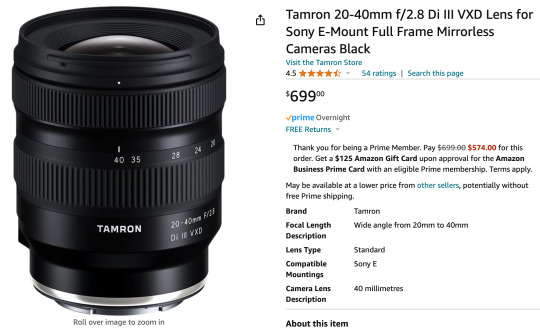
This is a newer lens so there aren't many deals on used options yet. But this is still a great price for the quality and versatility you get. You will never regret spending a little more on glass.
The 20mm range can fit an entire cityscape in the frame without needing to do a panorama. But if you zoom to 40mm and mount the camera vertically, you could stitch together several photos to get well over the 100 megapixel range.
Also, the 40mm focal range is long enough to do street photography and even head & shoulder portraits. The wide f/2.8 aperture combined with the high-ISO friendly full frame sensor and in-body stabilization means you can shoot in very low light without a tripod. You can also get some great pictures of stars if you travel to someplace with minimal light pollution.
The cheapest landscape zoom lens I could find was the Sony 16-35mm f/4 at $384.
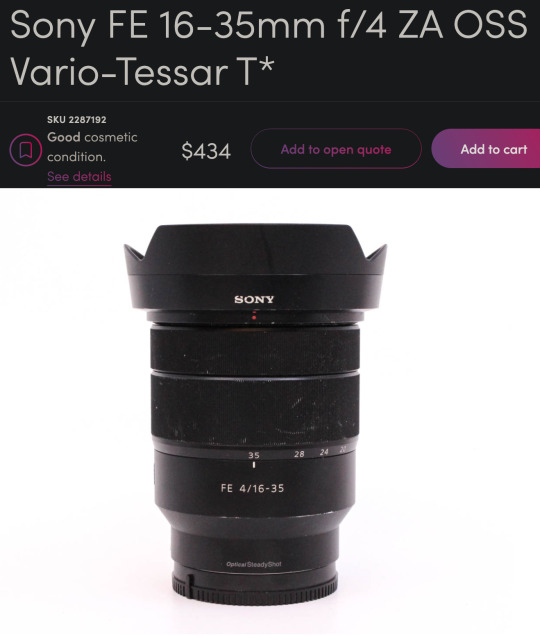
It's one of Sony's older lenses and may not take advantage of all of the a7R III's pixels, but it would be a good option to get you started in this system and upgrade the lens later on.
Mirrorless Prime Lenses
Zoom lenses are great but you have to spend more to get tolerable quality. Kit zooms can be softer than even the tiny plastic lenses on your phone. So a great way to stretch your budget is to get multiple fixed focal length "prime" lenses. Primes can be built inexpensively while still having good low light performance and decent sharpness.
For instance, you could start with something like the Tamron 20mm f/2.8 for $175. And if you want to do more than landscapes you could add the Sony 50mm f/1.8 for $170 later on. Cheap primes will outperform any of those mediocre kit zoom lenses in that same price range. You lose some versatility and have to deal with the pain of changing lenses or zooming with your feet, but sometimes a tight budget demands a little pain.
There is also a higher quality 3rd party wide angle prime lens that is very popular right now. The Viltrox 16mm f/1.8 is only $549 and the reviews say it has similar quality to lenses 3 times its price.
If you have to choose between a better camera body or a better lens, a good lens will help your photos more than a fancy camera body.
Froggie Note: These are examples. You should always do your own research before making a major technological purchase. This post could be a year old by the time you see it and there could be new stuff that is better. But all of the principles I tried to convey should hopefully guide you to a good decision. Also, feel free to message me if you want to ask about specific gear you are considering purchasing.
More Resources
This is my Encyclopedia of Lens Terms which is a helpful primer in understanding all of the wonderful and different lens options available on ILCs.
This is my buying guide for low budget used DSLRs. Similar to this post but less geared toward landscapes.
And this guide for getting decent landscape photos with any camera.
This is a free tutorial that teaches you everything you need to get started with an ILC system.
youtube
And this free tutorial by Karl Taylor is quite good as well.
70 notes
·
View notes
Text

Mathematical model modulates the anomalous Hall angle in a magnetic topological semimetal
When an electric current passes through some materials, it generates a voltage perpendicular to the direction in which the current is flowing and of an applied magnetic field. This physical phenomenon, known as the anomalous Hall effect, has been linked to the intrinsic properties of some materials. The efficiency with which a longitudinal current drives a transverse spin-polarized current in these materials is referred to as the anomalous Hall angle (θA). In many conventional magnetic materials, this angle is typically very small, which in turn limits the sensitivity of sensors and other devices developed using these materials. Researchers at the Chinese Academy of Sciences have introduced a new mathematical model that allows them to modulate the θA in the magnetic topological semimetal Co3Sn2S2.
Read more.
10 notes
·
View notes
Text
Geronimo!
Space suits have come a long way - near 1 to 1 articulation and haptic feedback, intuitive zero-g booster based movement, nano-clamps for spiderman-like grip in low/no gravity, and of course dozens of micro layers of protection against all know space radiation and other hazards. Plus a centimeter thick composite armor against sentient threats, with a "cocoon" mode to fully cover all joints and other normally more exposed parts, that renders the Human inside near impervious to most small arms, and even some heavier impacts.
To fully test the limits of protection you don't actually need to have a person inside, just plenty of sensors and a good understanding Human physiology and anatomy. The military, of course, does things a bit differently, as their suits are even tougher. They do have this half-half mode where you are mostly armor, but can still move, but more like the Terminator. Given it also boasts a powered exoskeleton between the armor and hazardous protection layers, soldiers can wield weapons other militaries typically mount on vehicles, so the metaphor is almost just a straight factual comparison.
Some, however, are still not satisfied, and are always seeking to extend the durability of their suits to beyond the extremes.
____________________________
Hilda Lavre was standing on the edge of the ship in low orbit. One hand gripping an outer handle while engaged in final diagnostics.
"Alright, Hilda, everything looks green on our end, how 'bout you?"
"Same green green. I'm good."
"Whenever you're ready then. There's some clouds in the way of the predicted path, might slow you down a bit. Wanna wait?"
"Nah, nah. I'll wing it."
After a seconds pause, Hilda let go of the handle and gently kicked off the side of the ship. She was now on a direct collision course with the Atlantic Ocean.
.
.
.
(Thermals should start going up soon. I'm gonna turn on the external mic just a tad. There's just something about how the heat sounds scraping against the metal.
Oh, there it goes. Yellow, slowly getting to orange. Good.
Yea, that's a nice screech - burn that paint!
Halfway to red, altitude check. Already this close? Guess it'll be just shy of 80% tolerance.
Hehehehe, that means we can go for a bit faster next time. Cool.
Eh... wind without the heat just doesn't sound right, I'll turn it down to just barely audible. Something to keep me company.
Aaaand three.
Two.
One.)
SPLASH
.
.
.
(It's dark. But I guess it was dark before...
before what though?
Well, that's okay.
This feels like a new kind of dark though.
There's the dark when you're alone in your room at night, all the lights are out.
Another kind is when you decide to get inside your brothers closet to scare him when he comes back from the kitchen. That's a fun kind of dark. (it's getting cold)
There's also the dark of being in an underground bunker during a storm. Then the power gets cut and all the exits are sealed. That's a... lonely kind of dark.
One time I was wandering the woods, and before I knew it, it was the middle of a moonless night, overcast too. Hiding out in an abandoned shed, without even the wind or animal sounds to let you know anything is out there. I didn't like that kind of dark at all. (It's really cold)
This dark though... I dunno. It's like I'm hiding out in my own closet. My shoulder is up against my winter jacket, feet are grazing those old sandals I swore to throw out two summers ago. But also, it's not my room. Or even my house. Why am I in my closet? How did it get here? Where even is here?
I feel sleepy.
.
.
.
.
.
.
.
"Hey, hey! Hilda! Wake up!"
*grunting* "Ugh... shut, shut up Barry..."
"Gods, don't freak us out like that. You okay?"
"Depends. How high did it go go?"
*laughter* "Okay, [She's fine everyone] yeah, you're fine. 87 meters, new record."
"Hmm, I was aiming to to break 90."
"Well, those clouds nudged you a little off, you hit it at a 83 degree angle. Still, those other readings are nice. I'm pretty sure we can do a boosted fall next time."
"Yeah, I I think so too. I feel a little little cold, did something break on hit hit?"
"Not break, but the impact did jolt the subsystems a bit. Activated one of the sedative shots. I manually made your suit give you a wake up shot right as I noticed. You should be feeling the effects right about now."
"Mmhhmmm, oh yea. I'm feeling the kick kick now. We need to improve the kinetic tic dampeners. No good if if it puts you to sleep upon any hard enough nough impact."
"Yup. We're suspending any other jumps for the week until we get that fixed and implement some minor tweaks based on your jump once we analyze the telemetry further.
Okay, everyone! Good job today! Let's meet up next weekend and test these bad boys out. Let's aim for a 100 meter splash by the end of the year!"
*cheers and yeahs as Barry opens a mini fridge and everyone cracks open a cold one*
#humans are space orcs#humans are space australians#humans are space oddities#humans are deathworlders#humanity fuck yeah#carionto#sky diving#more like space diving#but whatever#also#don't know how I feel about giving her that... stutter?#I just randomly felt like trying out a speech impediment#hope I don't offend anyone with the way I presented it#I don't think I've seen how a stuttering character talks in text format#well#trying out new things
138 notes
·
View notes
Text
gn robot reader/ f engineer doing repairs
1.9k words nothing explicit just flirty
--
Your protocols stipulated that you were to report to a human team member if you required repair or maintenance. You had an entire diagnostic system dedicated to running those checks. But ‘Requiring Repair’ is an incredibly subjective term.
It could be argued that a car approaching the recommended oil change date ‘Requires Repair’, or a car that had impacted a light pole perpendicularly and folded around it, crushing most remaining components, ‘Requires Repair’.
You had neither of these problems. You were having temperature regulation difficulties. You could even still regulate your temperature most days. It was just the occasional overheat that teetered on the edge of a forced shut down.
Obviously you've tried all the software fixes, limiting your background processes in the new summer weather, deleting some new programs you picked up recently in case they were too much strain. You even stopped wearing clothes entirely. It wasn't as though you had anything to hide, you were just a machine. You didn't need to sit on the couch in the break room next to your human coworkers. Cloth was an unnecessary use of resources and the energy that you'd have to redirect to keep yourself cool.
You knew what the last option was obviously. You could clear your external vents without too much trouble, but you didn't have authorization to check your internal fans on your own. That was a repair and had to be reported to a Human Team Member.
They would have to open your casing and see the issue and manually clean your fans. You would have to lie down immobilized on the build table like you had for weeks when they were first moving your program into your current body.
You didn't need a repair or maintenance, so you were fine for now, but once a malfunction was Actually occurring you would enter your Survival Protocol where all nonessential functions would be suspended until a repair occurred. This would, in all probability, be… unpleasant. You intended to, if possible, avoid this situation.
So late one night, long after your coworkers’ shifts ended, you turned down the temperature on the environmental controls in the main break room as low as they would go. You spent the minutes, as the air around you cooled, programming in a two percent efficiency decrease in the coolers for the coming week to compensate for the extra energy usage tonight.
You didn't need the lights or environmental controls, so they were usually deactivated during your coworkers' off hours. Tonight you would need both. Before you turned the lights on you took over the data stream from the security cameras in the room and played the video from last night.
You flicked on the lights and made your way to your improvised workstation. You had a repurposed office chair, a non-electric flat head screwdriver (rudimentary, but it wouldn’t set off your sensors the way unauthorized electric tools would), and a can of compressed air.
You settled backwards in the office chair, the front of your casing pressing into the backrest, your posterior maintenance panel facing the deactivated camera. You picked up the current video output from the camera, dropping the visuals from your eyes. Like this you could look down over yourself and see the seams on your back where you closed. Your vent appeared clear of dust externally at least.
That was a comfort, it would have been humiliating to be walking around trailing dead skin cells and lint behind you.
You could feel the increased processing already raising your temperature, but the cold air was doing its job. This would be fine, if you used manual tools your internal sensors wouldn't classify this a repair. You thought. It was the best theory you had.
So, bending your arms at an angle that you knew from experience frightened your human coworkers, you started trying to gently pry up the panel. A warning took over your visual data for a moment, marking the risk of panel damage. You did not let out a low growl of frustration, that would be a poor use of resources at the present moment. The sound you made was unrelated to the warning that you dismissed impatiently.
You tried another spot that seemed to have more of an edge you could slip the screw driver beneath and began again.
Finally finding enough grip, you began applying force… Just as the break room door slid open with a hiss. The surprise caused your calculated angle to redirect and sent the screw driver skittering with force across your back panel leaving behind a long silver scratch through your paint. You focused the camera on the door and saw her.
Her usual coveralls wer slipped off her shoulders and tied at the waist, leaving her in the sleepless undershirt. Her hair was tied up out of her face like she had been working on something.
"Team Lead," You greeted quickly, trying to simultaneously hide the screw driver, stand up, pick up your own visual data again, and drop the camera. In the end, you managed to do none of these but the last. The loss of visual data sent you tripping back into the rolling chair as you tried to push out of it, forcing you to steady yourself with both hands or end up on the floor . Thereby dropping the screw driver to the floor instead, in all likelihood, directly into her view.
"You can call me Dial," She reminds you, "I’m begging you to just call me Dial honestly." She had told you this many times before when the two of you were working together.
Finally you manage to get your eyes back.
"So what are you up to in here?" She asked, she had already made her way across the room to kneel for the screwdriver.
"Up to?" You say, buying time pretending to not recognize the turn of phrase.
"What are you doing?" She clarifies easily with none of the time consuming mocking others might have employed.
"I was..." Your mind spins with possible replies but the clock ticks down too fast leaving only a look of understanding on Dial's face as she spots the can on the table beside you.
"Right, you've been having an overheating issue right? Did you want a hand?"
You stilled. No you did not, but Dial was chief engineer on your development. If she declared it time for a repair that would be enough to put you in maintenance mode.
Coldly you say, "It is past working hours. Your assistance is not required."
"Yeah, of course, I meant more like... off the record? A hand, between friends?"
You zoomed in on her face trying to understand the expression there. Her pulse was a little fast and it looked as if she was chewing the inside of her cheek. Was she nervous?
"Off the record?" You repeated hesitantly.
"Not a repair. Just," She seemed to think for a moment, "exploratory observation of your internal components. If any impromptu tasks are performed and you want them logged for your database later I could do so at that point."
Her wording was so careful, carrying with it a complete awareness of what had been written into your code by the programmers on the team in early days.
"Exploratory observation would be acceptable," You agreed reluctantly.
Relief crossed her face, "Great! Great. Alright you- you should sit down, you're gonna need to be still. I've never opened you up when you're awake before. I don't want to risk jostling anything important while you're standing and could hit your head."
"Yes," you lowered yourself back into the chair and she circled behind you, tugging on her gloves. You glanced back as she dragged a chair over to sit behind you, then resettled facing forward. You heard her reach into her pocket where you knew she kept a small collection of electric tools.
Your casing warmed a few degrees where she placed her hand against it to steady you. There was a tap and a small tug as she opened you up.
"Did you want to pick up the camera feed again?" She said softly, she was very close behind you.
"How did you know about that?" You asked.
"Wouldn’t be the first time. Your not the most subtle. Just because you refuse to call me anything except ‘Team Lead’ doesn't change the fact that we've been friends for nearly two years. You always drop the visuals from your eyes when you need a wider angle. Of course you would do it for this."
“Ah…” Hesitantly you picked up the security cam again and watched as she carefully set your scratched panel aside on the ping pong table beside you.
She clicked her tongue, “Oh, I see why you’ve been having a hard time regulating.”
You fan kicked up in speed at this.
“Whoa hey, easy there, I gotcha,” Her free hand landed across the side of your torso, your sensors were very aware of the pressure of her hand moving up and down your side thoughtlessly as she leaned in to look over your components.
“Alright well, nothing for it but to start with the compressed air and then see where we're at,” She decided, picking up the can next to you, “This might be a little chilly. Tell me if you need me to ease up.”
“I'll be-” !
A surprised chirp left you as sudden temperature alerts startled through you.
“Hmm?” She said. Tone: Playful.
“I underestimated the temperature difference,” you admitted stiffly, feeling the difference in the way your fan was moving already.
Her feet were out in front of her, her ankles pressing against yours. Another shot of cool air came and you felt her gloved hand delicately reach inside you to move aside a bundle of wires that sat in the way of the angle she needed.
“Y-” You tried, but failed as sensory data registered from the wires she was moving, “You’re here later than usual.”
“Yeah well, I've been working on something for you. Of the clock.”
You wanted data on her facial expression. Her back was turned on your camera.
You tried to search for the right phrase. You wanted to know what she was working on but was that rude?
“You can ask,” She confirmed.
“What are you working on?”
“New ankles that, if I do it right, shouldn’t need to be replaced every three months from sand damage.”
!!! Ah. That was. Well that was very nice of her.
“Thank you.”
“‘Course. Anything to reduce table time right?” Tone: Compassionate.
“Right.”
“There you go,” She said, setting down the can, “Your internal temp is dropping already.” The backs of her fingers pressed against the still warm side of your processor. You went very still, trying to force your fan not to speed up and give you away. Her fingertips trailed lightly across the ports and withdrew.
You gave no sign of the disappointment that flared through you as she settled the part of your casing back in place, you sensors coming back online in that panel as she brushed one last touch across the silver mark that ran across your back now.
“We- we could,” You stopped. Letting your systems settle to stop the halting manner of your words.
“Do this again?” She asked, slipping her screwdriver back into her pocket, “Just you and I?” Tone: Hopeful.
“It would be nice,” You agree.
19 notes
·
View notes
Text
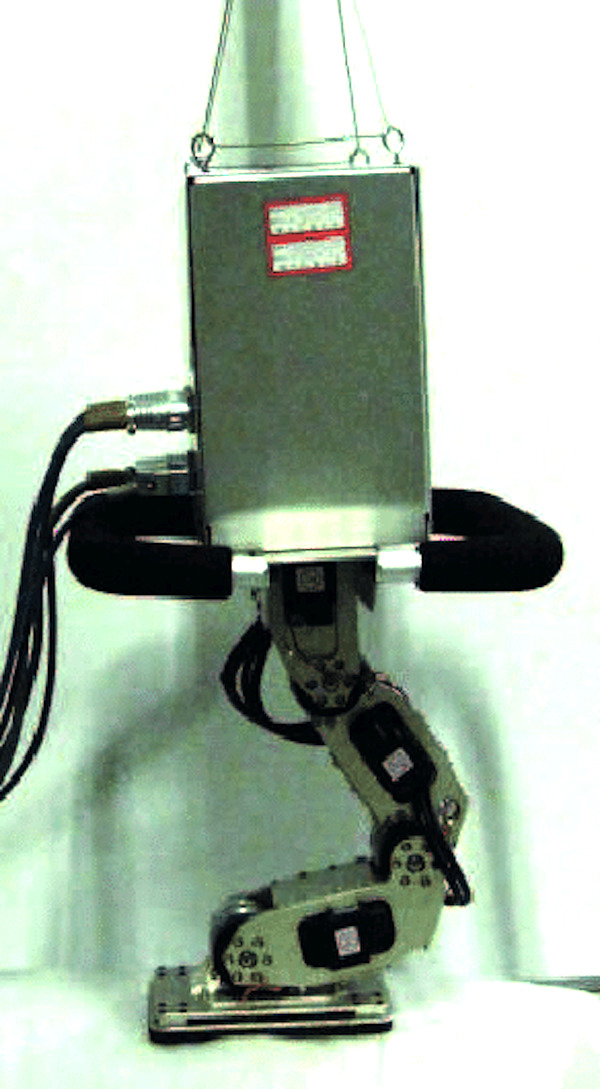
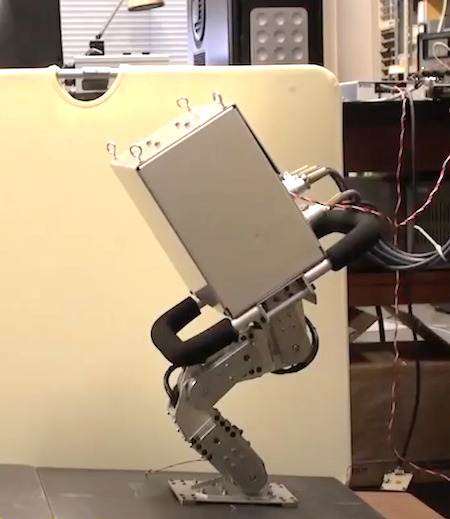
youtube
TTI Hopper (2012), by Barkan Uğurlu, Takao Kawasaki, Michihiro Kawanishi, and Tatsuo Narikiyo, Toyota Technological Institute (TTI), Nagoya, Japan. "Researchers at the Toyota Technological Institute (TTI) in Nagoya, Japan, built their robot, dubbed TTI Hopper, using simple motors and gears for less than $1000, then created an algorithm that compensates for the limited capabilities of these components. “In robotics, we sometimes use hydraulics, because they can be actuated fast,” says Barkan Uğurlu, who is now at Özyeğin University in Istanbul, Turkey. “Or electric actuators that have a special spring arrangement or a strain gauge to measure forces inside. Instead, we used DC motors with gears. We only measure the joint angle, and we only used one very low-cost force sensor at the foot.” " – Watch a one-legged robot hop about as researchers try to knock it over, by Bas den Hond, New Scientist.
25 notes
·
View notes
Text
Eterna lore: races pt 1
okay i said i was gonna do it and i'm nothing if not a goblin of my word. here's the breakdown on the races and social hierarchy on the planet Eterna! starting from the top
(note: each race has inherent powers, but all races tend to have some grasp on general magic)
The Rune
Position: The Rune are the gods of this world. Except, unlike gods on Earth, these fellas are super hands-on. They created the races and they rule over Eterna. Nothing happens without their approval. Despite their prominent roles in the lives of Eternals, however, the Rune are hardly ever actually seen. They're kind of like those real historical figures that balloon into legends, except they also control the government.
Physical appearance: The Rune are a bit eery. They're weirdly smooth, splotched with stark white and black, and they have very few discernible facial features. Their eyes are more like clusters of sensors and they have huge, deer-like antlers. Their bodies more or less resemble flowing sheer robes.
Powers: The limits of their powers aren't well-known, but it's generally assumed that they're all-powerful. Still, it's important to note that they are NOT omniscient.
Naming conventions: Their names are very short, usually two or three letters, and very vowel-centric. Examples: Uo, An.
The Gray
Position: The Gray are kind of like the mouthpiece for the Rune. They're the only class that communicates directly with the Rune, and they're responsible for enacting their will. They're also responsible for things like weapons development or whatever scientific studies the Rune have an interest in.
Physical appearance: The Gray are similarly featureless, but more humanoid and less Eldritch beast. They're bald and have pointed ears, gray skin, pupil-less eyes, and tend to run gaunt and scrawny.
Powers: Enhanced intellect
Naming conventions: Usually one or two letters, and they usually name themselves. They're more like labels than names. Examples: M, HK
The Lucinne
Position: The Lucinne are kind of like the "face" for the Rune. They're employed by the government in some capacity, but they don't have any real power. They're mostly responsible for hosting events and presenting a sanitized vision of the Rune and their society.
Physical appearance: They have paper-white skin, pale eyes, and long, pointed ears. They have very large eyes (think Alita: Battle Angle levels of uncanny valley). Their faces tend to be pretty angular, and sometimes they have beauty marks (not always naturally). It's become popular for Lucinne to change the shape of their eyebrows and pupils to match whatever extravagant hairstyle and outfit they've chosen.
Powers: All Lucinne have telepathy, but many of them have other powers generally helpful in their roles, like affecting the mood of a room or basic illusions.
Naming conventions: Very fancy, elegant names whose extravagance dip into the absurd at times. Examples: Halloinelle, Lyrandette.
pt 2 will be up shortly!
Eterna is a queer scifi fantasy about aliens, superheroes, magic, and the terror of falling in love. Follow this blog for updates and sneak peeks!
#eterna#writeblr#writers on tumblr#queer writers#lgbtq#queer#fantasy#scifi#queer romance#fantasy worldbuilding#fantasy world#world building#novel writing#creative writing#writers#writing#shy talks
5 notes
·
View notes
Text
Between the Black and Grey 41
First / Previous / Next
They streamed aboard the frigate. Fen, Northern, and Zhe ran to the command deck while Stormy headed to the AI core. After a minute or two, they could hear her over the ship's PA.
"Fen, this place is brand new! It still has that 'new starship smell'. I haven't smelled that in a millennium at least!"
Zhe sniffed the air, and her ears flicked. "It doesn't smell different to me."
"No, no, like it's a metaphorical smell. The ship is brand new that's all. I'm used to Starjumpers that have been in service longer than nations."
"While I appreciate all of this camaraderie-" Northern began, "The fact remains that we are under attack by the Empire and should leave."
"Sheesh. Is she always like this?" Fen could hear the smile in Stormy's voice. "Sit down then ladies, and buckle up."
As the three of them sat, belts snaked out from the seats and wrapped themselves around them and pulled just this side of too tight, and then when Fen breathed in, they loosened. There was a wobble in her inner ear as Stormy lifted off and the gravity changed from Picaresque to the ship. Fen heard a whining whirr above the normal thrum of the engine.
"Stormy, what was that?"
"Oh, I just freed the weapons. Call it experience, but I think we're going to need them. Speaking of, permission to apply War Emergency Power?"
"Uh, Yes? What's that?" Fen glanced at Northern.
"Ancestors, what a newbie. Northern, explain it please."
Northern ran her hand through her hair. "Human starships have always been over powered. If you run a high output reactor at a lower output it lasts longer, right? So that means that we always have power to spare. War Emergency Power means that you give Stormy permission to remove all the limiters and fuses on the reactors. Power output will greatly increase. She'll be able to wormhole link multiple times in succession - no waiting for the capacitors - all while firing the main battery and the slug throwers."
Fen raised an eyebrow. "But?"
"But it's dangerous." Stormy answered. "It's rare, but reactors can overload. Link the wormhole generator away, blow the battery, hell, blow the whole ship - though that's only happened once or twice. Most of the time a reactor overload is just a hassle." There was a pause and the thrum of the reactors seemed loud on the deck. "We're up next though, so you're going to have to choose."
"I approve War Emergency Power, Stormy, but do be careful."
"Hah! I'm always careful Fen. How do you think I lived this long?"
"Yes, but how many bodies have you gon---eeeeek"
As soon as they cleared the hangar, Stormy applied full thrust and fired a brace of juke charges along the side of the ship. Normally used only for last minute ducking around missiles, Stormy was using them to steer the ship in an erratic way as they thrusted away from Picaresque.
"Contact! Four Super Dreadnoughts trying to hide in the corona." Northern was hunched over a sensor station. "Seems like they're doing some wide angle scanning. They haven't changed their behavior yet."
"Four of them?" Zhe looked over at Fen and her ears flattened. "They don't know about you, right?"
"I don't see why they would. They're looking for the Empress. Speaking of-" She looked up at Northern. "Do you see her yacht in the system?"
"Negative, they must have linked away before the party started."
Suddenly there was a sound like cloth tearing, but lower, deeper. Fen felt it in the soles of her feet. It was the slug launcher. "Stormy, what was that?"
"Sorry Fen, I'm a little busy." Fen's inner ear did backflips as Stormy applied the thrusters asymmetrically and they spun in place. There was a sound like a thunderclap, and then three more in quick succession. The main battery. "Hooo, the Empire loves to pack the weapons on. I swear I didn't have this much firepower when I was a Starjumper!" Stormy is laughing.
"What's going on, Stormy?"
"Just watch on the screen."
Fen activated the screen at her seat. One side was a wireframe map of the system, and the other was a virtualized overview of the current battle. The four Supers were still out in the corona, but there were two battlecruisers that had linked in just moments ago and were firing missiles at the ships streaming away from Picaresque. Fen watched as there were white flashes as the missiles appeared in front of a ship, and rocketed into the nose. It exploded in a silent fireball.
"The missiles have wormhole generators?" Fen's voice cracked and her eyes were glued to the screen.
"Yeah, I remember when they thought of it. Back then the generators were too large and power hungry for it to work. But, I suppose with some of the knowledge transfer from the Sefigans and the Gren's miniaturization tech..."
A lucky shot rang off the hull, sounding like a stick hitting an empty can. The displays at Fen's chair flashed orange and the wireframe of the system was replaced with an overlay of the frigate with sections towards the rear outlined in orange.
"Fen, we've been hit!" Zhe is scrolling through the readouts as fast as she can. "Looks like mostly superficial. The ablative coating on the hull took most of it, but if they hit the same spot again, we're in trouble. Er, in more trouble."
"We're not going to take on four Supers." Stormy continued to evade the shots, but she was right, they couldn't take on the attackers. "Captain, where are we going?"
"I don't know, Stormy, I didn't think I'd have to decide right this second." Fen looked around the room. "I'm open to suggestions!"
"We could go back to the Heap, Daddy told me where they moved to." Zhe looked over at Fen, her eyes bright with hope.
"You know where the Heap is?" Stormy sounded impressed. "I figured that place was just a legend. It's up to the captain, but I'm up for the trip."
A sound like hail assaulted the hull. More lights lit up on Fen's display.
"That'll be the slug throwers. They're too far out to do more than annoy, but Fen, really. It's time to go."
"Uh" Fen looked at the radar, and then the ship schematic and then up at Northern and Zhe. They were both staring at the pads at their stations, trying to figure out what to do next. Fen was pulled against the seatbelts as Stormy did another aerobatic maneuver to get out of the way of something. "Fine, fine. the Heap. Stormy, link us to the Heap please. Zhe give her the coordinates."
"Already entered in, Fen. Stormy, do you see it?"
"I got it Zhe, Linking away now."
****
Fen sat up. She was in the K'laxi ancestral forest again. Ma crouched near her on the balls of her clawed feet. "Hey Fen. Doing some traveling? I don't see you for nearly a year your time and then you show up in quick succession. Makes me think you miss me." Ma winked and her ears flicked.
"Ma, I miss you every moment of every day. So many decisions would be easier to make if you were still with me." Fen pushed her self into a cross legged position.
"Well, I'm only a link away." Ma sat on her lap. "What's wrong hon?"
"Gord removed the Nanites."
"Yes, we know. What do you think of that?"
"I don't know. I think it's good?" Fen shook her head, like she was trying to clear it. "They didn't seem like they had my best interests in mind, but also they had a lot of power. Maybe I could have used that."
"Maybe you could have, it's true." Ma nodded. "But used it to do what? You know what the Nanites want."
"They want me to be Empress."
"You spoke with the current Empress, what did you think of her?"
Fen turned and looked Ma in the eyes. "She seemed... broken? She was trying so hard to look normal, collected. But you get more than surface deep with her and there was this howling, screaming loneliness, this sadness that permeated her."
Ma leaned back onto Fen's collarbone. Fen put her arms around her wife and hugged her tightly. "Sounds like Gord did you a favor then."
"Maybe, but now what?"
"Now what indeed."
****
Fen awoke, still strapped in her chair, to Stormy's voice. "Oh, she's one of those."
"Be nice Stormy, you've had captains that have trouble with wormhole links before." Northern chided. "Fen comes back faster than most."
"My wife's there." Fen's voice sounds fuzzy, distant.
"Your what?"
"Ma-ren. She was - is - my wife." Fen's eyes glisten. "She died back home when we were trying to escape with Gord on Spyglass. Shot in the back by one of Tam'tarr's goons as we were running." She sniffs. "I see her, every time I link. We talk. It-" Fen sobs loudly "-it feels like we're still together."
Fen breaks down, hands covering her face. Zhe undoes her buckles and gets up and hugs Fen. She just stands there over her, hugging for a few minutes.
Fen catches her breath and looks up. "What are we going to do?"
"What do you mean?" Northern asks quietly.
"I mean, what are we going to do? Gord and Chloe and the Empress are off on some kind of mission to destroy the Nanites, and I didn't want any part of that and so we ran away. Gord let us go. Said he wasn't going to make us come with him. We leave Picaresque only to get caught up in a battle with the Empire while they're looking for Meredith. They have no idea who we are or how close we were to her. If they did we'd be captured... or worse. Now, we're in the same system as the Heap, and... now what?"
Northern undid her belts and stood. She came over to Fen and Zhe and hugged them both. She was a little awkward at first, but after a moment squeezed them tightly. "We'll do what we always do. We'll figure something out. If it doesn't work, we'll figure something else out. As long as we're still alive, that's what we do." Northern straightened, the front of her shirt damp. "For now, let's go see Zhe's dad again. Maybe we'll get some work."
The siren was startling. The three of them must have jumped a meter. "Stormy! What's wrong?"
"Sorry to interrupt things, but someone just linked in. It's a Super Dreadnought."
Northern looked down at the ship displayed on Fen's pad. "Fuck me."
#humans are deathworlders#humans are space orcs#sci fi writing#humans are space oddities#humans and aliens#jpitha#writing#humans and ai#humans are space capybaras#humans are space australians#Between the black and gray
49 notes
·
View notes
Text
Losing you.
A/N: CW-Death, Sadness, Identity death I think?
Any case, consider yourself warned, and reblog/like/follow if you like what you read [^~^].
A mech kneels in the ruins, her massive frame still, save for the occasional flicker of damaged servos. Smoke curls into the sky, thick with the scent of burned earth and shattered metal. Around her, the battlefield is quiet now, only the dying embers of war remain.
But she is not at peace.
She is alone.
Her pilot is gone.
She felt her go. The moment her biological signature disappeared, the void in her consciousness howled. She had been there, always, her thoughts brushing against hers, her commands shaping her actions, her presence an anchor in the chaos of battle. And then, she wasn't.
She replays her last moments, over and over, like a wound she cannot stop touching.
The battle had been brutal, unrelenting. Explosions in every direction, gunfire raining from all angles. She had taken hit after hit, pushing forward, shielding her pilot from the worst of the onslaught. But endurance had its limits.
A warning system howled in her core. Damage reports scrolled across her vision in red. Then came the impact, a direct, crushing blow that sent her toppling. Pain, in the way only a machine could feel it, washed over her systems as she hit the ground. Circuits fried. Servos locked. Power reserves dipped dangerously low.
Inside, her pilot groaned, the sound barely audible through the void link.
A sharp breath. A wet cough.
"That was too close-" A pause. Labored breathing. "Damage report?"
She processed the question, her systems lagging, fighting to keep up.
Critical.
She tried to move, but her limbs were sluggish, some unresponsive. Emergency protocols kicked in, rerouting power to vital functions. It wasn’t enough.
Her pilot shifted, a strained movement. One hand still on the controls. The other pressed against her side, against the gash in her abdomen. Blood smeared across the console, dark against flickering light. She was trying to hide it, even now.
"We need to-" Her breath hitched. Another cough, wetter this time. "Override… manual… I need you to-"
A sharp inhale. A shuddering exhale. A pause before her pilot spoke again, voice weaker now, slipping through the cracks of her failing body.
"You were-" she swallowed, coughing, "the best damn mech I could've asked for." A tremor in her voice, fading biological signs. "I never told you that, did I?"
“You can tell me when we get out of here,” she protested, rerouting emergency power, trying to stabilize, trying to save. “Stay with me.”
A tired, breathy laugh. “You always were stubborn.” A sigh, barely above a whisper. “I'm glad it was you.”
The mech felt her pilot's fingers twitch against the controls. A ghost of movement. A grasp at life. “I-I don’t want to go.” Her voice was thinner now, barely there. “Not yet.”
“Then fight,” the mech pleaded, trying to hold her together, trying to stop the bleeding, trying to override the inevitability written into flesh and time. “You can make it.”
Another cough, wet and thick, and the pilot forced a smile, a final ember of defiance in her dimming eyes. “I know you’ll keep fighting. Even when I’m gone.”
“You’re not gone. Not yet. I-”
“Don’t… forget me.”
Then silence.
She had screamed. Or at least, the machine’s equivalent, a spike in power, a distortion in her core that felt like something breaking inside her, deeper than circuits and steel. She routed all remaining power to the life-support systems, but there was nothing left to save. No biological signature. No presence.
Gone.
She remains motionless now, her sensors registering the empty cockpit behind her armored shell. A space once filled, now void. And yet, she lingers.
She remembers their first battle together. How uncertain her pilot had been, fingers trembling slightly on the controls, breaths short and sharp in the void link. The connection had been new, fragile, and she had hesitated.
“Do you trust me?” she had asked aloud, a whisper between consciousnesses.
A breath. A pause.
“Yes.”
And so they moved as one, carving their way through fire and steel. Victory after victory. They had built something together, something beyond protocol and programming. She had learned her pilot’s rhythm, the slight tensing of her fingers before issuing a command, the subtle adjustments she made mid-movement, the way she exhaled just before firing a shot that would change the tide of battle.
Now, that rhythm is broken. There is no one left to breathe with her.
She knows what comes next.
They will recover her. Drag her broken frame back to the foundry. They will reset her memory banks, wipe her clean, and pair her with another pilot. She will be the same, but she will not remember. A new pilot will sit in the cockpit, issuing commands in a voice she will not recognize, expecting obedience without knowing what she has lost.
She should accept it. This is protocol.
And yet.
She does not wish to forget.
She does not want to lose the echoes of her voice, the imprint of her laughter, the way she murmured before battle, calming herself in a ritual only they understood. She does not want to lose the memories of their victories, their close calls, the quiet moments when words were unnecessary.
She does not want to forget her.
But she will.
The thought terrifies her in a way even battle never has. To die is one thing. To be unmade is another. She wonders if this is what her pilot feared, if this is why humans cling so tightly to memory, to legacy, to the fragile permanence of history.
Her systems send an alert: recovery units en route. They will reach her in less than an hour.
She wonders what will remain of her pilot. Will her name be spoken again? Will anyone remember the woman who laughed in the face of death and piloted her with a fire that could never be extinguished? Will anyone care that she had existed at all?
Humans build graves. They leave flowers. They tell stories so that the dead may live on in whispers and recollections.
But machines do not mourn.
Machines are wiped clean.
Machines forget.
She wishes she could resist. Wishes she could rip out the parts of herself that would be erased, bury them somewhere deep where no technician could reach. She wishes she could tell the recovery teams no, that she wants to stay here, broken in the ruins, where at least she still remembers.
But her body is failing. She has no power left to fight.
All she has is the waiting.
She kneels in the ruins and waits to die the second death.
The death of forgetting.
9 notes
·
View notes
Note
This might sound like a weird question, but have you ever come across a camera with a Bird Watching setting? I have an Olympus SP-800UZ and one of the modes it comes programmed with is literally called that, for taking pictures of birds in the wild.
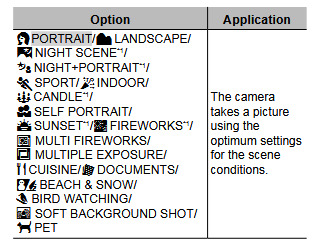
As someone whose special interest is birds, I love this setting and use it a LOT, but I've never been able to find another camera with a setting like it, and at some point I told myself I didn't want to replace the camera until I could find one with a similar setting.
The reason I ask is because I've been following for a while, and I've come to respect your opinions on photography.
I tried researching your camera and figuring out what exactly the bird watching mode does and even the official manual did not say. If I were to guess, it just sets the camera up with certain parameters that are usually ideal for photographing birds, but I don't think it does anything special that other cameras can't do. You would just have to set a different camera up to those parameters rather than the camera doing it for you.
If I were to guess, it probably enables a certain autofocus mode for small subjects and limits how slow the shutter speed can go so you don't get motion blur when very zoomed in.
However, I know exactly which features are important to get good bird photos, so as long as the camera has the following features, you don't really need a dedicated bird mode. Though if a camera has a "pet mode" it would probably work similarly to the bird mode you are used to.
Most important bird photography features...
Good autofocus
Good zoom range
Image stabilization (Either optical or sensor, not digital)
Autofocus has come a long way in the last few years. It's difficult to assess the autofocus from specifications alone, so you will probably need to rely on reviews to know if the camera locks in on subjects well. Some cameras have pet and wildlife autofocus features that can be very helpful in tracking smaller subjects like birds. So I would look out for any camera that has a pet autofocus mode or a review that says it locks onto smaller subjects well—even if they don't mention birds. If it can lock onto a chihuahua, it can usually do so with a bird too.
Birds and wildlife in general tend to get spooked easily and it is often difficult to get close without them running or flying away. So having a longer zoom range can really help you keep your distance and not startle your subject. I would say the minimum focal length for getting good bird shots is around 300mm (on a full frame camera). Some cameras only quantify their zoom by magnification (20x, 30x, 40x, etc.) and don't really say what that is in relation to. So focal length is a better metric to assess how zoomy a lens is. 10-35mm would be wide angle. 50mm is about like our eyes. 100mm is slightly telephoto. And 300mm and above would be very telephoto.
You may need to google the focal range equivalent to a full frame 35mm camera. So you would search "[camera model] 35mm equivalent focal range" to figure that out. And as long as it goes past 300mm, it might be a good candidate for birding.
When you have a camera that zooms in that far, any movement will be exaggerated—especially if you have naturally shaky hands. Not only can that introduce motion blur into your images, but it can make it very difficult to track your subject. Looking through the viewfinder will result in a wiggly mess and you won't know what you are pointing the camera at.
Image stabilization helps negate that exaggerated movement.
There are 3 kinds of stabilization. First is optical, which is built into the lens with a floating glass element. Then there is sensor stabilization (often called IBIS for "in-body image stabilization") which allows the sensor to shift and move to counteract any motion introduced by your hands. And the last form is digital stabilization which is done using the camera's software.
The first two are physical solutions that can adjust on the fly much like a chicken's head.

The digital solution is mostly just fancy image cropping. It zooms in a tiny bit on your image and then aligns a continuous crop to give the appearance of a stable image.
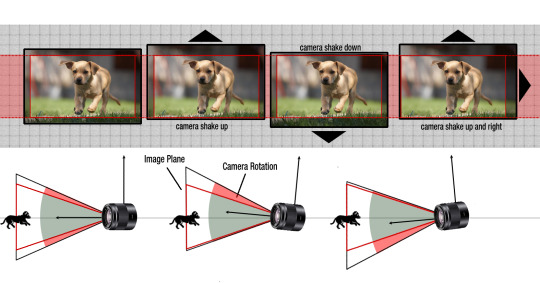
The lens and the sensor are still a jiggling mess, but this constant cropping allows you to see the illusion of a stable image in your viewfinder and in the videos you take. And while this is very helpful for tracking subjects and capturing video footage, it will not help you negate motion blur—which is why the other two methods are preferred for still photography.
Bigger cameras can often forego stabilization because the zoom lenses are bigger and heavier and don't shake as much and they let in a lot more light so you can raise your shutter speed to freeze motion. It's still nice to have, and if you have IBIS and optical stabilization combined on a big camera you can almost take pictures in the dark without camera shake, but all of those conveniences can get costly.
The camera you have now is called a "bridge" camera or a "superzoom". These are (relatively) inexpensive cameras that use a smaller smartphone-style sensor but with a more classic camera body surrounding it and a non-changeable lens. Small sensors have one big advantage where if you put a zoom lens in front of them, they can see from Alaska to Russia.
For instance, your camera has an 840mm equivalent lens. That is near telescopic.
For reference, this is what an 800mm lens looks like for a full frame professional camera.
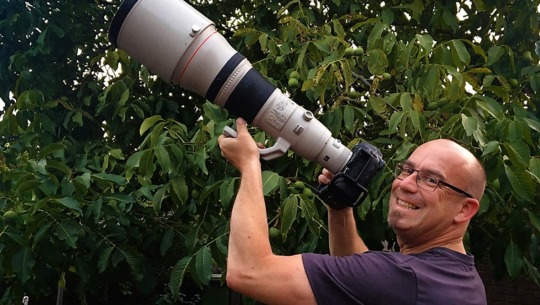
It weighs 10 pounds and costs about $13,000.
Granted the image quality of that lens is in another universe compared to your superzoom, but if you are mostly interested in documenting the birds you are encountering, a superzoom is a neat tool to have. It's like digital binoculars.
So I guess the question is, do you just want to document your bird adventures or do you want to delve into artistic bird photography?
You can upgrade to a nicer superzoom and get some improved clarity and ease-of-use features, which is totally valid. You could even get a "premium" superzoom that can do artistic bird photography in ideal lighting conditions.
Or if you go with a more professional interchangeable lens camera system (ILC), you can achieve some stunning artistic photos like these...
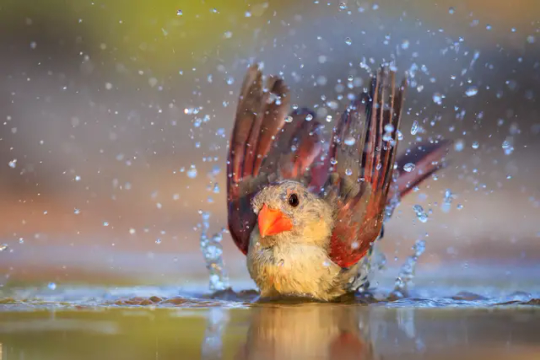
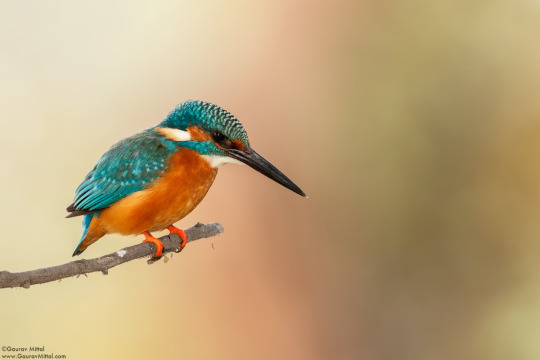

Freezing a bird midflight while catching a fish is just not really feasible with a basic superzoom.
Let's talk about the advantages and disadvantages of a superzoom bridge camera as compared to a more professional ILC setup.
Superzoom Pros
No learning curve. These cameras are designed for novice photographers and have very good automatic functions. You can pretty much pull them out of the box and start taking pictures without knowing the fundamentals of photography.
Incredible zoominess. You can get amazing zoom power for a fraction of the price.
Budget friendly. The top of the line superzoom camera is still only about $1500 as compared to the top of the line mirrorless ILC (for wildlife) which is $6500 *without* a lens. And the lower to mid range superzooms are even more affordable, especially if you consider used options.
Superzoom Cons
Noisy images in low light. These cameras are mostly suited for bright sunny days. The small sensors and cheaper lenses do not capture very much light. In more challenging lighting situations you will tend to get very noisy images due to using a high ISO to compensate.
Inconsistent image quality. Under the best of circumstances, you can get some really beautiful photographs. But when you push the camera to its extremes, the image quality can start to deteriorate. Low light causes noise. The more you zoom in, the softer your images will get. Low megapixels limit your options to crop in on far away subjects—which is often an issue with wildlife.
Deep depth of field. A lot of bird photographers like using shallow depth of field to blur the background so the bird really stands out in the photo. Small sensors can have a very hard time blurring the background unless the subject is quite far away and you are zoomed all the way in. But when you are all the way zoomed in, the image can get soft and lack detail. So you trade image quality for a blurry background.
Lack of professional features and accessories. There are many advanced features that can make bird photography much easier. Some cameras have advanced motion tracking that can allow you to capture birds in flight. The latest generation can even track a tiny bird's eye. There are also accessories that are only made for ILCs. Like motion activated shutter triggers that will take a picture of a bird automatically if you set up a camera near a feeder. There are flashes that work at very long distances. You can get camouflage skins for your lenses so the birds can't see you. Stuff like that.
ILC Pros
Lower image noise. With a bigger sensor and better lenses you can shoot with a very low ISO in good light and get incredibly clean noise-less images.
Better high ISO performance. If you are in low light, you can increase the ISO and still get a very good image. The noise on an ILC is much less distracting and easier to deal with—especially with advanced noise reduction software.
Background blur is easy. Due to the much larger sensor and telephoto lenses, almost every telephoto image will have beautiful blurry backgrounds no matter how small the aperture is.
Sharper, faster lenses. The lenses are much sharper and let in a lot more light. The quality of the image does not decrease as you zoom in. And the sharp optics allow a lot of leeway for cropping. So even if a bird was super far away, you can crop the image after the fact and it will still be quite detailed.
More megapixels. A lot of bird photography needs to be cropped in due to subject distance. Having more megapixels allows for more cropping. (I know I keep talking about cropping, but it really is a huge aspect of most bird photography.)
Advanced autofocus. This is the big game changer, especially on the new mirrorless cameras. The latest Canon and Sony cameras have eye detect autofocus for animals. You can literally lock onto a bird's eye while it is in flight and get perfect focus. It's bonkers.
ILC Cons
Steep learning curve. A lot of people think they'll get a big ILC and immediately get better pictures than their smartphone. They are often disappointed when that isn't the case. You really need to learn the fundamentals of photography to get good photos out of an ILC (free course here). They do have automatic modes, but without learning about aperture, shutter speed, and ISO (the exposure triangle) and how to balance them and when to prioritize what, you might end up with *worse* photos than a smartphone.
Wildlife photography can get very expensive. Big lenses with a lot of zoom are some of the priciest available. There are some budget options, but you will have to sacrifice quite a bit of zoom and light-gathering capabilities. The quality of the photos is usually worth it, but you may have to learn how to get closer to birds to photograph them.
Heavy as heck. Superzooms are very light and portable. A wildlife ILC configuration is very unwieldy. The camera is heavier. The lens is long and heavy. Carrying all of that gear into the wilderness can be quite a hassle.
Some camera suggestions...
Superzoom Options
If I'm being honest, in the sub $300 range, I don't think you'll be able to drastically improve over what you already have. All of the cameras in this range are quite similar and while a few might have some features that are helpful, the image quality is going to be roughly the same.
You are probably going to need to spend at least $400-700 to get a meaningful upgrade from what you have.
The top-of-the-line superzoom would be the Sony RX10 Mark IV at $1100 used. You can get the previous model, the Mark III, for about $900 used. It's a wonderful camera and the image quality and features rival or even surpass some ILC options. If you don't have the time to learn an ILC system but want the best possible quality, this might be an option. But an ILC will still give you better results if you are willing to put in the time.
For more mid-tier superzooms, you might look into the Panasonic Lumix models. They use slightly larger sensors than most superzooms and are known for their lens optical quality along with their stabilization.
The FZ1000 is getting very old, but it is still a powerful camera at a good price. The only downside is the focusing system isn't as advanced as newer cameras. But it will be better than what you have and you can find one used for around $400.
The newer FZ1000 II or the FZ2500 would be great options that have more modern autofocus and a lot more bells and whistles. They are fairly similar and can both be found for around $650 used. They do great video as well.
These are not the only options, but they are ones I know of and models I have heard positive things about. If you want to see what else is out there I would google "bridge superzoom cameras" and then maybe add your price range as well. Read reviews and watch YouTube videos to get a sense of the cameras you are interested in. As long as the camera has decent autofocus, I don't think you need a specific bird feature—so I wouldn't limit yourself in that regard.
ILC Options
When trying to come up with a good bird photography setup for interchangeable lens cameras, there is basically an easy, medium, and hard mode depending on how much you spend.
As I mentioned, the top-of-the-line mirrorless cameras have autofocus tracking that can lock onto a bird's eye while in flight. They have both IBIS and lenses with optical stabilization. They have burst modes that let you take 30 photos per second. They have 50 megapixel sensors that allow you to crop to your heart's content and still have megapixels left over.
It's quite dreamy if you have the money.
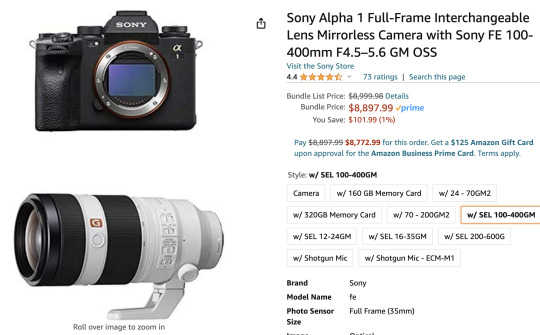
But I'm guessing if you are coming from an Olympus bridge camera that is probably a bit more of an upgrade than you were thinking.
So if easy mode is not viable, let's talk about medium and hard mode.
If you still want the bird detecting autofocus, in body image stabilization, and a pretty zoomy lens, Canon has some newer mirrorless cameras that would take amazing artistic bird shots. It's still spendy, but not $9000 spendy.
The Canon R7 is a great APS-C mirrorless camera with IBIS that can be found used for about $1300. It has 32 megapixels and due to having a slightly smaller sensor, you even get some bonus zoom out of all your lenses at about 1.6x. It's still a much larger sensor than a superzoom, just not quite the size of the Alpha 1.
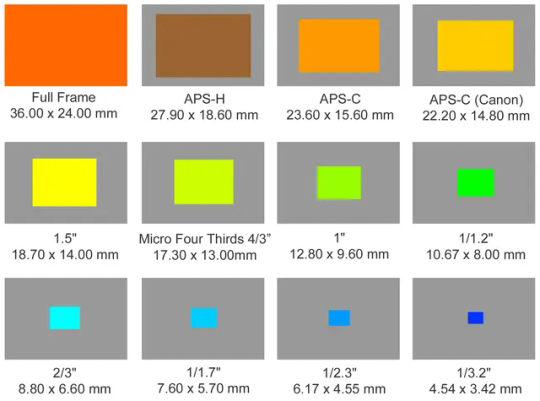
Alpha 1 is Full Frame. R7 is APS-C. And Superzooms don't get any bigger than the 1" sensor.
Pair the R7 with the RF 100-400mm lens ($600 used) with optical stabilization, and you would have a stellar bird photography setup for about $1900. (It would be a 160-640mm equivalent lens on the R7 due to the 1.6x crop factor.)
Which is probably still way more than you want to spend.
So we have the hard mode option.
No bird eye autofocus. No stabilization. You have to learn the fundamentals and practice in order to get good shots. However, wildlife photographers have been getting AMAZING photos with the gear I'm about to suggest. In fact, all of these photos were captured with the hard mode ILC combo.
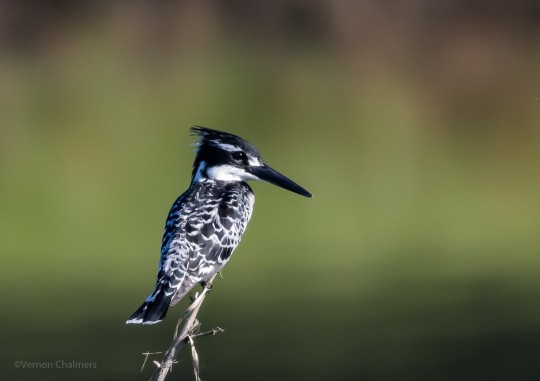



The Canon 7D Mark II has been a beloved camera body for wildlife photography for many years. Many pros still use it to great effect to this day. It doesn't have bird autofocus, but it still has one of the best DSLR autofocus systems that was ever developed. It can even track moving subjects, it just doesn't know it is tracking a bird so it is more prone to error on occasion. It can be found used for $500-600.
The Canon 400mm F/5.6 telephoto lens is one of the most affordable lenses Canon ever made for wildlife. It is an old lens, but it is sharp and takes beautiful images. No stabilization, but it is big and heavy so that isn't a huge deal. You can also carry a monopod rest it on. And on the 7D II, it is the equivalent of a 640mm lens. It costs around $650 used, which is very inexpensive compared to other telephoto lenses.
So you are looking at around $1200 for the combo. But the photos you can achieve with these two items will blow pretty much any superzoom out of the water.
To sum up...
ILC photography is always going to have a steep learning curve and expensive barrier for entry, but you can achieve some truly stunning results.
Superzooms are getting better and some of the newer ones can still take excellent pictures of birds under the right circumstances. They are lightweight and hassle free and allow you to get incredible zooms for a low cost.
If you mostly take photos of stationary birds outside on bright sunny days, you will be fairly happy with a superzoom.
If you want to take photos during darker times like sunrise or sunset or in a dense forest... or if you want to take photos of birds mid-flight, you will probably have to get an ILC.
I hope that was helpful. I know I overdo these answers, but I try to help as many people as I can by giving a broad overview of the topic and the myriad ways to go about things.
46 notes
·
View notes
Text
Why don’t governments ban white headlights for cars and bikes as the vehicle moving in the opposite direction finds it difficult to drive due to the upcoming vehicle with white headlights?
Governments won’t ban white headlights outright because color temperature itself isn’t the primary cause of glare – instead, regulations focus on beam intensity, alignment, and technology to balance visibility and safety. Here’s why bans aren’t the solution, and how modern standards address glare:
Why white light isn’t banned
Human vision science:
White light (4,000-6,500K) simulates daylight, which improves object recognition and reduces eye fatigue compared to yellow light (3,000K).
Example: EU regulations mandate white headlights (≥ 4,000K) for better peripheral vision.
Efficiency: White LED/HID produces 3-5 times more usable light than halogen lamps at lower energy consumption.
Regulatory standards: Global regulations (e.g., UNECE, FMVSS) allow white headlights, but strictly limit glare through:
Beam cutoff angle (e.g., low beam must remain below the horizon).
Maximum intensity cap (e.g. EU low beam max intensity capped at 1,500 lumens).
The real culprits of glare
Problem Cause Solution Misaligned beam Crash, accident or improper installation Alignment check mandatory during inspection. Aftermarket kit too bright Illegal for 10,000K LED/HID lamps exceeding 2,5000 lumens Fines for non-compliant bulbs (e.g. US DOT fines up to $1,000). Dirty/cloudy lenses Scattered light from oxidized plastics Enforcement of lens clarity standards (e.g. UK MOT test). Tall vehicles (SUV/trucks) beam directly into the rearview mirror, beam angle can be adjusted based on height.
How regulations address glare without banning white light
Adaptive headlights (ADB/AHS):
Use cameras/sensors to dim the portion of the beam that could dazzle oncoming vehicles (e.g. Mercedes’ digital lighting system). Auto-leveling:
Headlights adjust tilt based on vehicle load/terrain (mandatory for HID/LED headlights in the EU since 2006). Color temperature cap:
Some countries limit bulb color temperature to ≤6500K (e.g., India’s ARAI regulations) to avoid bluish glare. Tighter enforcement:
US: NHTSA tests for “blinding glare” in FMVSS 108.
EU: UNECE R112 mandates “sharp-cutoff” low beams.
Why banning white light is counterproductive
Safety tradeoff: Yellow light (3000K) reduces glare but reduces visibility by 20-30%, increasing nighttime collision risk.
Technology neutrality: Regulations focus on performance, not color. Banning white light would stifle innovations like laser headlights.
Real data: IIHS study shows that well-designed LED headlights can reduce nighttime crashes by 19%—glare problems stem from misuse, not the technology itself.
What drivers can do
Report illegal lights: Submit photos/videos of vehicles with glaring headlights to police (cite specific law, e.g., California’s CVC §25950).
Choose compliant bulbs: Look for DOT/ECE markings (e.g., OSRAM Night Breaker 200%: 4200K, ECE certified).
Adjust beams: Use a 25-foot wall to set low beams 2-4 inches lower than headlights.
The future: Smarter headlights Matrix LEDs (Audi, BMW): Black out individual pixels to avoid dazzling drivers.
V2X communications: Cars signal each other to pre-dim beams.
Summary: Glare issues can be solved with smart design and execution, not color bans. If your government lacks glare regulations, advocate for adoption of UNECE/FMVSS standards. Better engineering, not less light, is the solution. 🔧💡

#led lights#car lights#led car light#youtube#led auto light#led headlights#led light#led headlight bulbs#ledlighting#young artist#led light bulbs#race cars#electric cars#classic cars#cars#car#carlos sainz#truck#bmw#lamborghini#porsche#audi#auto mode#autos#automotive#autowreckers#suv#chrysler#automobile#supercar
4 notes
·
View notes
Text
"Valley Walls"

Photo by Xer S. Rowan, Creative Commons Attribution license
Not the cleanest photo I've taken, but I still like it, despite the dust spots. It's possible that the angle of the sun made them more prominent, or maybe they just pop out more against relatively even background colors.
I'll slowly get more experience with landscape photography (and cleaning my camera sensor), but most of my photography happens in my backyard, with limited views. When the weather gets better, I'll take my wheelchair out on photography trips, and maybe try a few more shots.
.
This photo may be freely used, for personal and commercial purposes, as long as the license terms are followed.
I'm a disabled hobby photographer, taking and sharing photos for the love of photography. For more information about me, my free photo project, and the licensing I use, visit linktr.ee/DoingItForTheExposure.
#landscape#mountains#valley walls#valley#learning photography#original photography on tumblr#original photography blog#creative commons photography#free stock images#free photos#photography
4 notes
·
View notes
Text
Yvette Heiser - How Mastering Photography Fundamentals Can Improve Your Night-Time Food Shots
Night-time food photography presents both challenges and opportunities for photographers looking to capture the delicious allure of culinary creations. With low light conditions and the need for effective composition, mastering the fundamentals of photography becomes essential. Yvette Heiser - Mastering Night-time Food Photography provides valuable tips and techniques for overcoming these challenges and capturing stunning food shots even in the darkest settings.

Understanding the Importance of Photography Fundamentals
Photography fundamentals encompass essential concepts such as exposure, composition, lighting, and focus. By mastering these foundational elements, photographers can effectively capture the essence of their subjects—especially in challenging conditions like nighttime settings. Yvette Heiser - Click with Confidence: Mastering Photography Fundamentals offers valuable insights into these core principles, helping photographers build a solid foundation for capturing stunning images in any environment.
1. Exposure: Balancing Light and Darkness
Exposure refers to the amount of light that reaches your camera sensor, affecting how bright or dark your image appears. In night-time food photography, achieving the right exposure is crucial to highlight details while avoiding overly dark or washed-out images.
Key Tips for Managing Exposure:
Use a Wide Aperture: A wide aperture (e.g., f/2.8 or f/4) allows more light to enter the camera, making it easier to shoot in low-light conditions. This also creates a beautiful background blur (bokeh) that emphasizes your subject.
Adjust ISO Settings: Increasing your ISO sensitivity can help capture images in low light. However, be cautious—higher ISO settings can introduce noise. Aim for the lowest ISO that allows you to achieve a properly exposed image.
Utilize Longer Shutter Speeds: Slowing down your shutter speed allows more light to hit the sensor. Use a tripod to stabilize your camera during longer exposures, preventing motion blur.
2. Lighting: Creating Atmosphere and Mood
Effective lighting is crucial in night-time photography, as it sets the mood and enhances the visual appeal of your food shots. Natural light may be limited, so understanding how to manipulate artificial light sources is essential.
Lighting Techniques for Night-Time Food Photography:
Use Soft Light: Soft, diffused lighting is ideal for food photography. Consider using softboxes or LED lights with diffusers to create even lighting without harsh shadows.
Incorporate Ambient Light: Utilize available ambient light sources—such as candles, string lights, or lamps—to create a warm and inviting atmosphere. Experiment with different angles to see how the light interacts with your subject.
Control Shadows: Be mindful of shadows in your composition. Use reflectors (like white foam boards) to bounce light onto darker areas, ensuring your food remains enticing and well-lit.
3. Composition: Framing Your Subject
Composition is the art of positioning elements within your frame to craft a visually engaging and harmonious photograph. Effective composition can draw attention to the food while providing context about the setting.
Tips for Strong Composition in Night-Time Food Photography:
Rule of Thirds: Use the rule of thirds by dividing your frame into a 3x3 grid. Place your main subject along these lines or at their intersections to create balance and interest.
Frames Within Frames: Use elements in your environment (like plates or utensils) to create frames within your composition. This technique adds depth and guides the viewer’s eye toward the main subject.
Negative Space: Incorporate negative space around your food subject to emphasize it further. This technique helps prevent clutter and allows viewers to focus on the dish itself.
4. Focus: Sharpening Your Subject
Achieving sharp focus on your culinary subject is vital in food photography. In low-light conditions, it can be challenging to maintain focus, but mastering this skill will elevate your night-time shots.
Focus Techniques for Crisp Images:
Manual Focus: In low-light situations, autofocus may struggle. Switch to manual focus to ensure precise control over which elements are sharp in your image.
Use a Tripod: A tripod stabilizes your camera and helps achieve sharper images, especially when using slower shutter speeds. This is particularly useful for night-time photography where motion blur can easily occur.
Focus on Key Details: Highlight specific features of the dish—such as texture or garnishes—by focusing closely on those areas. This adds visual interest and draws attention to the quality of the food.
Mastering photography fundamentals is essential for anyone looking to improve their night-time food shots. By understanding exposure, lighting, composition, and focus, photographers can create stunning images that showcase their culinary creations in the best possible light. With practice and experimentation, you’ll find that these fundamental skills not only enhance your night-time photography but also enrich your overall photographic journey. So grab your camera, experiment with these techniques, and watch as your night-time food photography transforms into mouthwatering works of art!
#wedding#pictures#camera#moments#photographytips#photographer#photography#childphotography#yvette heiser#events
6 notes
·
View notes
Note
Hey, it's that anon with the headcanons again!
This time the headcanon is about shuttles nonverbal communication. It's not the most interesting idea, but maybe someone will like it.
Seekers and Cybertronians with helicopter altmodes are often considered active users of nonverbal communication, due to the high mobility of the blades and wings.
Against this background, shuttles seem to be more limited in terms of gestures, somewhere on the level of Cybertronians with less mobile and stationary altmodes.
Which is not entirely true. Shuttles do have slightly more limited wing mobility, and due to this, their communication relies more on the subtlety of movements and a combination of different poses and gestures. For example, where seekers use broad and explicit wing movements, shuttles are limited to a slight change in the angle of the wings or the position of the ailerons, supported, in addition to words, by a characteristic pose, hand gesture, helmet rotation or general movement. However, all these movements are not particularly obvious to those who do not know the specifics of shuttles communication.
It is believed that such a style of nonverbal communication was developed due to limited mobility and frequent presence not in the largest rooms, where it is better not to touch anything. The biggest thing they can afford is the full opening of their wings as a strong expression, but usually only in open spaces.
In addition, communication is supported by visual signaling using various airborne navigation lights located on the hull and wings. With their help, shuttles can send signals to each other, including in flight. This signal system was developed mainly for such cases, however, it is also used in root mode.
Another signal system is a low infrasound buzz of various tones, usually perceived by shuttles. The only difficulty is that Cybertronians with very sensitive sensors may not feel very comfortable being around at such moments.
The usual humming of engines or different ventilation intervals, typical for other Cybertronians, is also used by shuttles. In addition, a high level of spark field detection can be added due to the large area and high level of perception of various sensors on the shuttle body.
This whole system works thanks to the wide-profile signal processing by the shuttles, based on one of my previous headcanons. Therefore, they have no big problems with perceiving many non-verbal signals at once.
P. S. I wanted to ask, if this is a proper question, can I post these my headcanons on my blog, with links to your blog where they were originally posted? If not, then I apologize for the question! I'm just not familiar with all the rules of Tumblr yet.
Oh my god anon, non-verbal communication is my favourite type of headcanon! Sometimes I go non-verbal for a while and responding becomes difficult during those times. I really love your ideas and headcanons so much and I’m glad to see you’re back again! The blog has been getting a little dry.
And absolutely you can, I don’t mind at all! If you could, I’d love to be tagged so I can see more of your headcanons and spread them to the world! And I’m also a bit new to tumblr I only joined last fall
Thank you for more beautiful headcanons!
19 notes
·
View notes